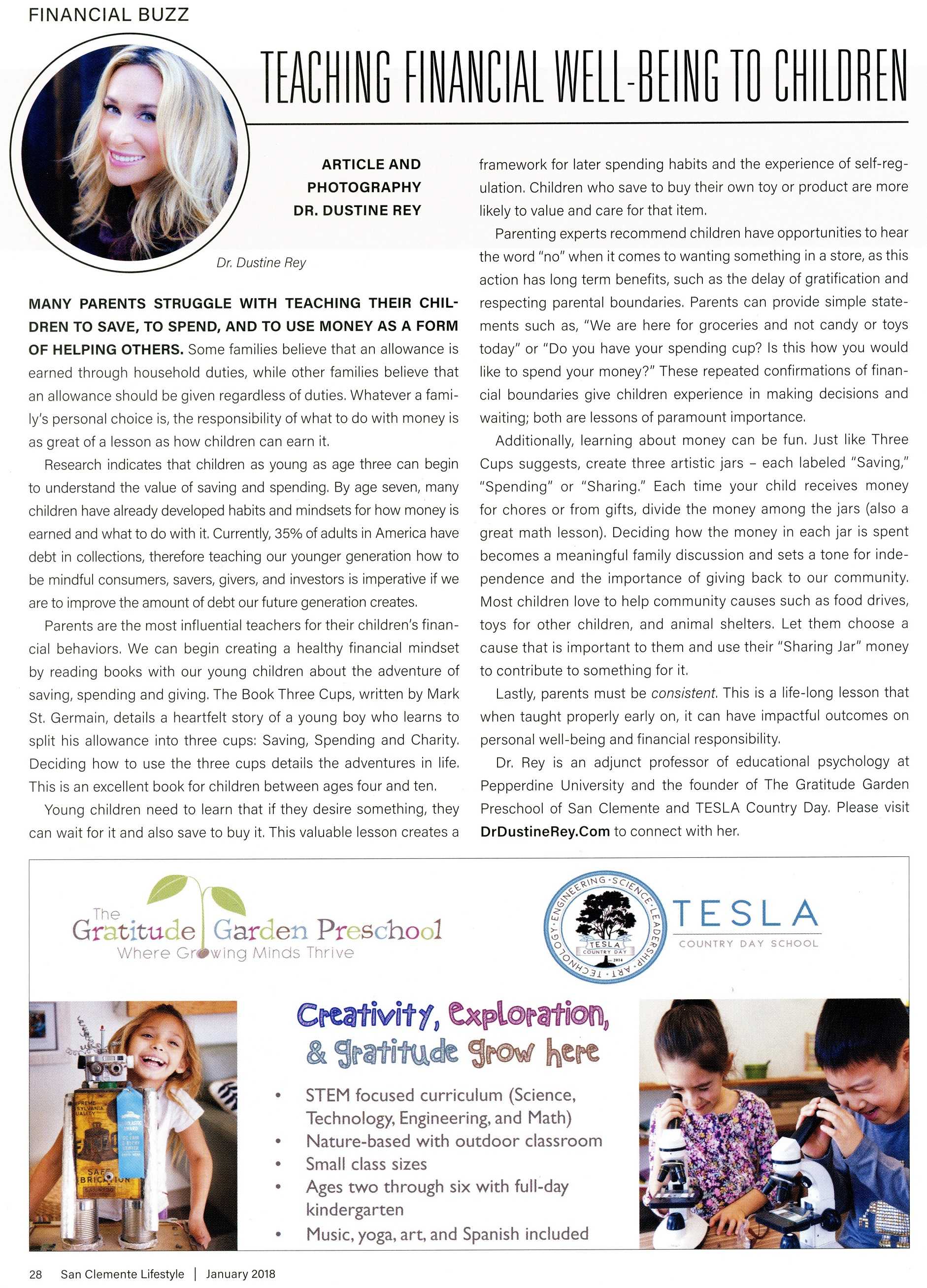Many parents struggle with teaching their children to save, to spend, and to use money as a form of helping others. Some families believe that an allowance is earned through household duties, while other families believe that an allowance should be given regardless of duties. Whatever a family’s personal choice is, the responsibility of what to do with money is as great of a lesson as how children can earn it.
Research indicates that children as young as age three can begin to understand the value of saving and spending. By age seven, many children have already developed habits and mindsets for how money is earned and what to do with it. Currently, 35% of adults in America have debt in collections, therefore teaching our younger generation how to be mindful consumers, savers, givers, and investors is imperative if we are to improve the amount of debt our future generation creates.
Parents are the most influential teachers for their children’s financial behaviors. We can begin creating a healthy financial mindset by reading books with our young children about the adventure of saving, spending and giving. The Book Three Cups, written by Mark St. Germain, details a heartfelt story of a young boy who learns to split his allowance into three cups: Saving, Spending and Charity. Deciding how to use the three cups details the adventures in life. This is an excellent book for children between ages four and ten.
 Young children need to learn that if they desire something, they can wait for it and also save to buy it. This valuable lesson creates a framework for later spending habits and the experience of self-regulation. Children who save to buy their own toy or product are more likely to value and care for that item.
Young children need to learn that if they desire something, they can wait for it and also save to buy it. This valuable lesson creates a framework for later spending habits and the experience of self-regulation. Children who save to buy their own toy or product are more likely to value and care for that item.
Parenting experts recommend children have opportunities to hear the word “no” when it comes to wanting something in a store, as this action has long term benefits, such as the delay of gratification and respecting parental boundaries. Parents can provide simple statements such as, “We are here for groceries and not candy or toys today” or “Do you have your spending cup? Is this how you would like to spend your money?” These repeated confirmations of financial boundaries give children experience in making decisions and waiting; both are lessons of paramount importance.
Additionally, learning about money can be fun. Just like Three Cups suggests, create three artistic jars – each labeled “Saving,” “Spending” or “Sharing.” Each time your child receives money for chores or from gifts, divide the money among the jars (also a great math lesson). Deciding how the money in each jar is spent becomes a meaningful family discussion and sets a tone for independence and the importance of giving back to our community. Most children love to help community causes such as food drives, toys for other children, and animal shelters. Let them choose a cause that is important to them and use their “Sharing Jar” money to contribute to something for it.
Lastly, parents must be consistent. This is a life-long lesson that when taught properly early on, it can have impactful outcomes on personal well-being and financial responsibility.
Dr. Rey is an adjunct professor of educational psychology at Pepperdine University and the founder of The Gratitude Garden Preschool of San Clemente and TESLA Country Day. Please visit DrDustineRey.Com to connect with her.

